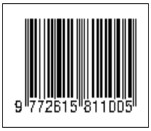PEMANFAATAN LIMBAH PENETASAN AYAM BROILER SEBAGAI SUMBER PROTEIN PAKAN IKAN
Abstract
Keywords
Full Text:
PDFReferences
Abiola, S. S., N. E. Radebe, C. V. D. Westhuizen, and D. O. Umesiobi. (2012). “Whole Hatchery Waste Meal as Alternative Protein and Calcium Sources in Broiler Diets.” Archivos de Zootecnia 61 (234): 229–234. doi:10.4321/S0004-05922012000200007.
Chen, Z., and X. Jiang. (2014). “Microbiological Safety of Chicken Litter or Chicken Litter-based Organic Fertilizers: A Review.” Agriculture 4 (1): 1–29. doi:10.3390/agriculture4010001.
FAO Fisheries and Aquaculture Technical Paper. (2006). Use of Fishmeal and Fish Oil in Aquafeeds: Further Thoughts on the Fishmeal Trap. Food and Agriculture Organization of the United Nations.
Hadadi A, Herry, Setyorini, E. Ridwan. (2007). Pemanfaatan Limbah Sawit Untuk Bahan Baku Pakan Ikan. (Jurnal). Budidaya Air Tawar, 4/1 5 2007. Hal 11-12.
Hardy, R. W., & Barrows, F. T. (2002). Diet Formulation and Manufacture. In J. E. Halver & R. W. Hardy (Eds.), Fish Nutrition (3rd ed.). Academic Press.
Mahmud, A., M. A. Jabbar, A. W. Sahota, and M. Z. U. Khan. (2015). “Effect of Feeding Hatchery Waste Meal Processed by Different Techniques on Egg Quality and Production Performance of Laying Hens.” Pakistan Journal of Zoology 47: 1059–1066.
Millamema, Oseni M, Relicado M. Coloso and Felicitas P. Pascual. (2002). Nutrition in Tropical Aquaculture. Southeast Asian Fisheries Development Center. Tigbauan, Iloilo, Philippines.
Nowak, A., T. Bakula, K. Matusiak, R. Galecki, S. Borowski, and B. Gutarowska. (2017). “Odorous Compounds from Poultry Manure Induce DNA Damage, Nuclear Changes, and Decrease Cell Membrane Integrity in Chicken Liver Hepatocellular Carcinoma Cells.” International Journal of Environmental Research and Public Health 14 (8): 933–940. doi:10.3390/ijerph14080933.
NRC (National Research Council). (2011). Nutrient Requirements of Fish and Shrimp. National Academies Press.
Prabakaran, R., & Valavan, S. E. (2021). Wealth from poultry waste: an overview. World's Poultry Science Journal, 77(2), 389-401.
Suprayudi MA. (2010). Pengembangan Penggunaan Bahan Baku Lokal untuk Pakan Ikan/Udang: Status Terkini dan Prospeknya. Makalah disajikan pada Semi- Loka Nutrisi dan Teknologi Pakan Ikan/Udang. Bogor, 26 Oktober 2010. Badan Litbang Kelautan dan Perikanan, KKP bekerja.
Webster CD, Lim C. (2002). Nutrient Requirements and Feeding on Finfish for Aquaculture. CABI Publ. UK. p: 293-299.
Zarei, A., A. M. Mohammadi, and B. Hemmati. (2014). “Metabolizable Energy and Chemical Composition of Poultry by-Product Meal.” Iranian Journal of Applied Animal Science 4:849–853.
DOI: https://doi.org/10.35327/gara.v18i2.916
Refbacks
- There are currently no refbacks.
Copyright (c) 2024 GANEC SWARA

This work is licensed under a Creative Commons Attribution-ShareAlike 4.0 International License.










